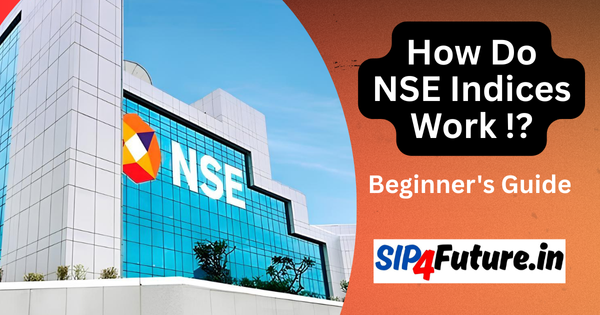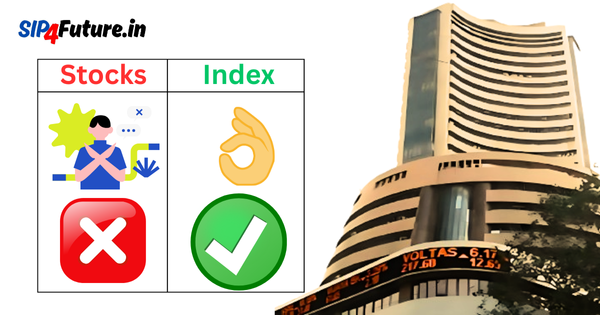Varun Beverages Limited (VBL), a leading franchisee of PepsiCo and a key player in the global beverage industry, has once again demonstrated its robust growth trajectory with its Q1 2025 results. The company reported a remarkable 30.1% year-on-year increase in consolidated sales volume, reaching 312.4 million cases. This surge underscores VBL’s strong market presence and operational efficiency. Revenue from operations climbed 28.9% to ₹55,669.40 million, while net profit after tax soared by 33.5% to ₹7,313.60 million. These figures, announced on April 30, 2025, reflect VBL’s ability to capitalize on seasonal demand, expand its footprint, and innovate within the fast-moving consumer goods (FMCG) sector.
In this comprehensive article, we’ll dive into the details of Varun Beverages’ Q1 2025 performance, explore the factors driving its success, and assess the broader implications for the FMCG sector, government policies, and global market dynamics. We’ll also examine how VBL’s strategic moves, such as new production facilities and international acquisitions, position it for future growth.
What Drives Varun Beverages’ Q1 2025 Success?
Strong Volume Growth and Market Penetration
The 30.1% surge in consolidated sales volume to 312.4 million cases is a testament to VBL’s robust distribution network and strategic expansion. In India, which accounts for a significant portion of its revenue, VBL reported a 22.9% volume growth, driven by a strong summer season and enhanced distribution capabilities. The company’s focus on underpenetrated rural and semi-rural markets, coupled with the addition of over 55,000 outlets, has significantly boosted its reach.
Internationally, VBL’s acquisition of South African operations and greenfield projects in the Democratic Republic of Congo (DRC) contributed to its volume growth. The company’s ability to integrate these operations while maintaining profitability highlights its operational excellence.
Financial Highlights: Revenue and Profit Surge
VBL’s financial performance in Q1 2025 was equally impressive. The 28.9% increase in revenue to ₹55,669.40 million was driven by a combination of volume growth and improved product mix. Net profit after tax rose by 33.5% to ₹7,313.60 million, reflecting operational efficiencies and stable raw material costs. The company’s EBITDA margin improved by 60 basis points year-on-year, despite challenges such as a higher mix of carbonated soft drinks (CSDs) in India and lower-margin own brands in South Africa.
| Financial Metric | Q1 2025 | Q1 2024 | YoY Change |
|---|---|---|---|
| Consolidated Sales Volume | 312.4M cases | 240.1M cases | +30.1% |
| Revenue from Operations | ₹55,669.40M | ₹43,171.20M | +28.9% |
| Net Profit After Tax | ₹7,313.60M | ₹5,478.90M | +33.5% |
| EBITDA Margin | 19.8% | 19.2% | +60 bps |
Interim Dividend Declaration
VBL’s board approved an interim dividend of ₹0.50 per equity share for FY 2025, signaling confidence in its cash flow generation and commitment to shareholder value. This dividend, announced on April 30, 2025, follows a final dividend of ₹0.50 per share for FY 2024, reinforcing VBL’s consistent dividend policy. Investors can track dividend updates on the NSE website.
How Is Varun Beverages Expanding Its Footprint?
New Production Facilities in India
VBL has aggressively expanded its manufacturing capabilities to meet rising demand. In Q1 2025, the company commenced commercial production of carbonated soft drinks and packaged drinking water at its new facility in Kangra, Himachal Pradesh. Additionally, a facility in Prayagraj, Uttar Pradesh, began operations on April 22, 2025. These greenfield projects enhance VBL’s capacity to serve northern and eastern India, regions with significant growth potential.
International Acquisitions and Snack Ventures
VBL’s global ambitions are evident in its strategic acquisitions and partnerships. The company increased its stake in South African operations, gaining distribution rights in Namibia, Botswana, Mozambique, and Madagascar. Furthermore, VBL entered the snack category by securing agreements to manufacture and distribute PepsiCo’s “Simba Munchiez” in Zimbabwe (by October 2025) and Zambia (by April 2026). It also plans to produce Cheetos in Morocco by May 2025, diversifying its portfolio beyond beverages.
These moves align with VBL’s strategy to leverage PepsiCo’s global brand portfolio while tapping into high-growth markets. The company’s international operations now span six countries, including Nepal, Sri Lanka, Morocco, Zambia, and Zimbabwe, as noted on Varun Beverages’ official website.
What Impact Does the FMCG Sector Have on VBL’s Performance?
FMCG Sector Dynamics
The FMCG sector in India is a key driver of VBL’s growth, fueled by rising disposable incomes, urbanization, and changing consumer preferences. According to the Ministry of Commerce and Industry, India’s FMCG market is projected to grow at a CAGR of 7-8% through 2030, with beverages being a high-growth category. VBL’s association with PepsiCo, a global leader in beverages and snacks, positions it to capitalize on this trend.
However, the sector faces challenges such as raw material price volatility and regulatory pressures. VBL has mitigated these risks by procuring raw materials early and focusing on sustainable packaging, which has helped maintain gross margins.
Competitive Landscape
VBL competes with major players like Nestle India, Britannia Industries, and Tata Consumer Products in the FMCG space. While these companies focus on diverse product categories, VBL’s specialization in beverages gives it a competitive edge. Its extensive distribution network and exclusive PepsiCo franchisee status make it a dominant player in the carbonated soft drink and non-carbonated beverage markets.
| Competitor | Market Cap (₹ Cr) | P/E Ratio | Dividend Yield |
|---|---|---|---|
| Varun Beverages | 178,951.42 | 68.97 | 0.33% |
| Nestle India | 234,000 | 75.20 | 0.00% |
| Britannia Industries | 115,000 | 60.15 | 1.34% |
| Tata Consumer Products | 108,000 | 85.30 | 0.71% |
Data as of April 30, 2025, sourced from Moneycontrol.
How Do Government Decisions Influence VBL’s Stock Price?
Taxation and Regulatory Policies
Government policies significantly impact the beverage industry, particularly through taxation. The Goods and Services Tax (GST) on carbonated soft drinks stands at 40% (including cess), compared to 12% for juices and milk-based beverages. This differential taxation incentivizes VBL to diversify into higher-margin categories like juices, sports drinks, and value-added milk products, as noted in ICICI Direct’s analysis.
Additionally, environmental regulations are shaping the industry. The Ministry of Environment, Forest and Climate Change has introduced guidelines to reduce plastic usage and promote sustainable packaging. VBL’s initiatives to lightweight packaging and remove corrugated pads align with these regulations, enhancing its reputation and cost efficiency.
Rural Development Initiatives
Government schemes like the Pradhan Mantri Gram Sadak Yojana and rural electrification programs have improved infrastructure in India’s rural areas, where VBL is expanding its distribution network. Enhanced connectivity has enabled VBL to penetrate deeper into these markets, driving volume growth.
What Is the Global Market Scenario Affecting VBL’s Stock?
Current Trading Conditions
On April 30, 2025, VBL’s stock closed at ₹519.50 on the NSE, down 1.82% from its previous close. Despite this daily decline, the stock has shown resilience, trading 27% above its 52-week low of ₹419.55 but 22.31% below its 52-week high of ₹681.12. The stock’s P/E ratio of 68.97 is significantly higher than the sector average of 20.68, indicating strong investor confidence in VBL’s growth potential, as per LiveMint.
Global market volatility, driven by geopolitical tensions and tariff policies, has impacted FMCG stocks. For instance, potential U.S. tariffs under the Trump administration could affect PepsiCo’s supply chain, indirectly influencing VBL’s costs. However, VBL’s focus on domestic and African markets shields it from some of these risks.
Currency Fluctuations and Raw Material Costs
As a global player, VBL is exposed to currency fluctuations, particularly in its international operations. A stronger Indian rupee against the U.S. dollar benefits VBL by reducing import costs for raw materials like PET resin. Conversely, volatility in sugar and water prices, influenced by global supply chain disruptions, poses a challenge. VBL’s proactive procurement strategies have helped stabilize margins, as highlighted in Business Today.
When Will Varun Beverages Sustain Its Growth Momentum?
Strategic Growth Engines
VBL’s management has outlined three key growth engines: expansion in South Africa and neighboring countries, entry into the DRC, and diversification into snack production. These initiatives are expected to drive double-digit volume growth domestically and higher growth internationally, according to Motilal Oswal’s analysis.
The company’s planned ₹7,500 crore Qualified Institutional Placement (QIP) will strengthen its balance sheet, enabling further capacity expansion and debt reduction. VBL’s net debt-free status, achieved through QIP proceeds, enhances its financial flexibility.
Challenges to Monitor
Despite its strong performance, VBL faces challenges such as shifting consumer preferences toward healthier beverages and increasing competition from local players. The company’s ability to innovate with low-sugar and functional beverages, like its planned Jeera-flavored drink, will be critical.
Analysts remain optimistic about VBL’s growth prospects, with several research institutes providing share price targets for 2025 and beyond:
| Research Institute | Target Price (₹) | Recommendation | Timeframe |
|---|---|---|---|
| Motilal Oswal | 675 | Buy | 12 months |
| JM Financial | 615 | Buy | 12 months |
| Axis Securities | 720 | Buy | 12 months |
| ICICI Direct | 700 | Buy | 12 months |
Data compiled from Business Standard and Moneycontrol.
Historical Returns
VBL has delivered exceptional returns over the years, reflecting its strong fundamentals and market leadership. The stock has provided a 3-year return of 266.26%, significantly outperforming the Nifty 50’s 42.29% return over the same period. Over the past year, however, the stock experienced a 5.83% decline, compared to a 6.65% gain in the Sensex, indicating short-term volatility.
| Timeframe | VBL Return | Sensex Return |
|---|---|---|
| 1 Year | -5.83% | +6.65% |
| 3 Years | +266.26% | +42.29% |
| 5 Years | +620% | +85% |
Data as of April 30, 2025, sourced from Economic Times.
Conclusion: A Bright Future for Varun Beverages
Varun Beverages’ Q1 2025 results highlight its ability to deliver consistent growth in a competitive and dynamic market. With a 30.1% surge in sales volume, 28.9% revenue growth, and a 33.5% increase in net profit, VBL has solidified its position as a leader in the FMCG sector. Strategic expansions in India and Africa, coupled with diversification into snacks, position the company for sustained growth. While challenges like regulatory pressures and global market volatility remain, VBL’s proactive strategies and strong fundamentals make it a compelling investment opportunity.
Disclaimer: The information provided in this article is for educational purposes only and should not be construed as investment advice. The stock market is subject to risks, and past performance is not indicative of future results. Readers are encouraged to consult with a qualified financial advisor before making any investment decisions. Data and projections are based on publicly available information and analyst reports, which may contain inaccuracies.




